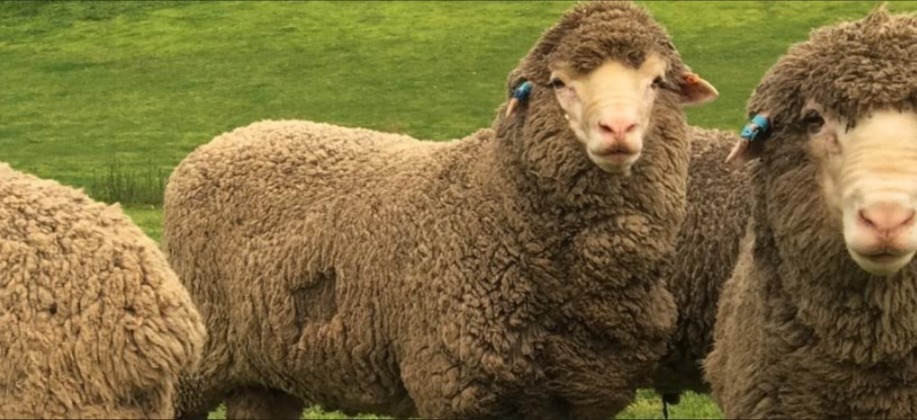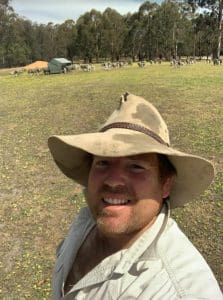
Some the ‘Nicholson River’ homebred rams.

Hugh Pemberton.
A DNA Flock Profile test has delivered new insights into the value of genetic selection for East Gippsland ultra-fine Merino breeders Doug Pemberton and son Hugh.
The stud and commercial operation at Nicholson in East Gippsland has until recently relied on visual assessments of prospective semen sires and the DNA test was their first step into selection based on Australian Sheep Breeding Values.
Hugh said they purchased a DNA Flock Profile test earlier this year to get a baseline on their ‘Nicholson River’ commercial flock, and were quite surprised by the results.
“They showed that our sheep were behind in the key production trait we are chasing of fleece weight, but our fat and meat content were a lot closer to our goals than we realised.
“The test showed there is lots of scope for improving our fleece weight through genetic selection but being an ultra-fine flock and also being in drought, we’ve now got quite a bit of work to do to improve things,” he said.
The DNA Flock Profile test was developed by the former Cooperative Research Centre for Sheep Industry Innovation (Sheep CRC), the Flock Profile test is now supplied to industry through Neogen Australasia.
The Flock Profile test provides commercial breeders with a set of genetic measures for benchmarking their flock against industry averages – the data is then stored and displayed in RamSelect.com.au to assist buyers in selecting rams to better meet their breeding objectives.
The test involves randomly sampling 20 young ewes from a commercial flock for DNA testing. It uses genetic links with animals of known breeding values from the industry’s Information Nucleus database to estimate the genetic basis of the commercial flock.
The Pembertons were already in the process of injecting new genetics into their own nucleus flock and have been tracking the results of progeny as they begin implementing an electronic performance-recording system. By combining this data with the flock profile results and the RamSelect app, the Pembertons hope to add a new level of selection scrutiny to their ram teams in addition to traditional visual assessments.
Hugh said he trialled the flock profile test because he wanted “to get the best of what we can get, our best outcome”, from the available selection tools and Merino genetics available, including ASBVs.
“It’s the experience with the data that we lack and that’s really what I want to learn more about.”
Hugh said in past 4-6 years selection has been aimed at lifting frame size of their sheep, while aiming for a 14-15 micron flock with a higher fleece cut and retaining a true-to-count crimp type.
“With the new blood-lines we’ve added in recent years, we’ve picked up frame size quite a bit and our lambs are now a lot more valuable on carcase weight,” Hugh said.
“The next step is to exert more selection pressure in our nucleus to increase our fleece weight without jeopardising the quality of our wool.
“I’m really excited by the technology that’s available to help us achieve that.”
Between the challenges of maintaining the ewe base and the retaining as many lambs as possible, the Pembertons are pressing on with plans to improve their genetic selection methods through the adoption of electronic identification, ASBVs and genomic testing.
The stud had previously bought semen from selected sires to go over their own selected and stud ewes to produce rams. Hugh said he would now be adding ASBVs to the selection criteria for semen sires, although he said there was a limited choice of suitable sires available. He would appreciate more Merino breeders adopting ASBVs to increase the number of available rams that meet his selection criteria.
“The hardest thing is finding the new genetics that we are after – the current studs have used all the same bloodlines that we’ve used.”
The Pemberton operation is currently in the grip of crippling drought and has had to drop its flock number from 4000 to 2000 joinable commercial ewes, plus 250-400 selected and stud ewes. Previously the flock consisted of about 8000 Merinos, including wethers for wool production. All wethers are now sold as lambs after their first shearing.
- For more information visit www.sheepdna.com.au



HAVE YOUR SAY